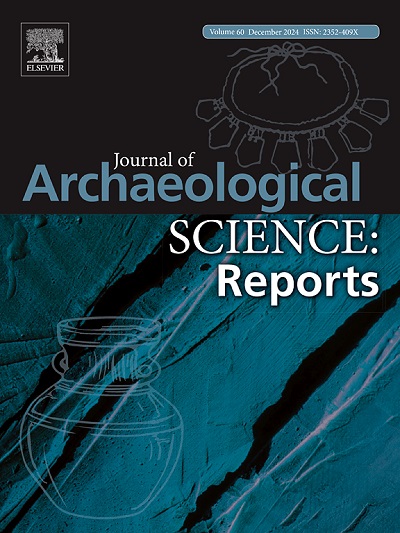Taphonomic considerations for identifying ochre residues on ostrich eggshell
IF 1.5
2区 历史学
0 ARCHAEOLOGY
引用次数: 0
Abstract
Ochre pigments and ostrich eggshell (OES) products (including beads, engravings, and containers) are proxies for past human economic and social behaviors. Ochre residues are reported from OES fragments and beads across Africa and Asia, starting within the last ∼ 30,000 years. Residues may be the results of different activities—wearing beads against pigmented surfaces, intentional application to beads or the exterior of containers, and transporting, storing, or mixing the ochre in containers or bowls—or acquired post-depositionally. Understanding how taphonomic processes can create, alter, or delete residues offers insight to human behavior and site formation processes. We apply experimental archaeology to test how taphonomic processes, including archaeological recovery practices such as artifact washing, interact with ochre applied to OES surfaces. Ochred OES fragments were buried, washed and buried, or exposed directly or indirectly to a ground fire. We recorded temperature of the fire, residue coverage, and elemental data using portable X-ray florescence analysis at each experimental stage. Our results suggest that washing and burying specimens preferentially removed residues from the cuticle surface, while the effect of burning on residues depended on the proximity to the combustion feature. We compared the experimental data with OES fragments from Terminal Pleistocene and LGM archaeological deposits from the HOR-1 site in northern Malawi, where archaeological ochre residues are observed more frequently and in more substantial amounts on the mammillary surfaces.
鉴定鸵鸟蛋壳上赭石残留物的语音学考虑
赭石颜料和鸵鸟蛋壳(OES)产品(包括珠子、雕刻和容器)是过去人类经济和社会行为的代表。据报道,从非洲和亚洲的OES碎片和珠子中发现了赭石残留物,这些残留物始于最近~ 30,000年。残留物可能是不同活动的结果——佩戴珠子与色素表面接触,故意将珠子或容器外部应用,运输,储存或混合容器或碗中的赭石——或沉积后获得。了解地语学过程如何创建、改变或删除残留物,为人类行为和位点形成过程提供了见解。我们应用实验考古学来测试埋藏学过程,包括考古恢复实践,如文物清洗,如何与应用于OES表面的赭石相互作用。赭色的OES碎片被掩埋、清洗和掩埋,或者直接或间接地暴露在地面火灾中。在每个实验阶段,我们使用便携式x射线荧光分析记录了火的温度,残留物覆盖率和元素数据。我们的研究结果表明,清洗和掩埋有利于去除角质层表面的残留物,而燃烧对残留物的影响取决于与燃烧特征的接近程度。我们将实验数据与来自马拉维北部HOR-1遗址的末更新世的OES碎片和LGM考古沉积物进行了比较,在那里,考古赭石残留物在乳头状表面上观察到的频率更高,数量也更大。
本文章由计算机程序翻译,如有差异,请以英文原文为准。
求助全文
约1分钟内获得全文
求助全文
来源期刊

Journal of Archaeological Science-Reports
ARCHAEOLOGY-
CiteScore
3.10
自引率
12.50%
发文量
405
期刊介绍:
Journal of Archaeological Science: Reports is aimed at archaeologists and scientists engaged with the application of scientific techniques and methodologies to all areas of archaeology. The journal focuses on the results of the application of scientific methods to archaeological problems and debates. It will provide a forum for reviews and scientific debate of issues in scientific archaeology and their impact in the wider subject. Journal of Archaeological Science: Reports will publish papers of excellent archaeological science, with regional or wider interest. This will include case studies, reviews and short papers where an established scientific technique sheds light on archaeological questions and debates.
 求助内容:
求助内容: 应助结果提醒方式:
应助结果提醒方式:


